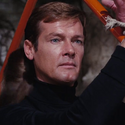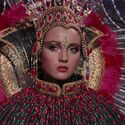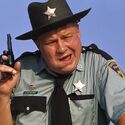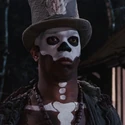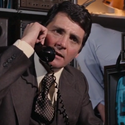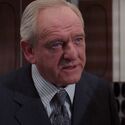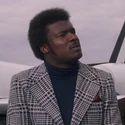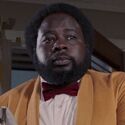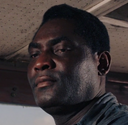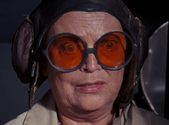No edit summary Tag: rte-source |
Tag: Source edit |
||
| (37 intermediate revisions by 14 users not shown) | |||
| Line 1: | Line 1: | ||
| + | {{Cinematic}} |
||
{{Live and Let Die}} |
{{Live and Let Die}} |
||
| + | {{Infobox film |
||
| − | {{BondMovie |
||
| image = 007LALDposter.jpg |
| image = 007LALDposter.jpg |
||
| caption = ''Live and Let Die'' theatrical poster |
| caption = ''Live and Let Die'' theatrical poster |
||
| Line 16: | Line 17: | ||
| budget = $7 million |
| budget = $7 million |
||
| gross = $161.8 million |
| gross = $161.8 million |
||
| − | | preceded_by = ''[[Diamonds Are Forever]]'' |
+ | | preceded_by = ''[[Diamonds Are Forever (film)]]'' |
| − | | followed_by = ''[[The Man with the Golden Gun]]'' |
+ | | followed_by = ''[[The Man with the Golden Gun (film)]]'' |
}} |
}} |
||
{{Dialogue|Mr. Big|[to his men] “Is this the stupid mother who tailed you uptown?”|James Bond|There seems to be some mistake. My name is...|Mr. Big|Names is for tombstones, baby!|attr=James Bond to Mr. Big/Kananga.}} |
{{Dialogue|Mr. Big|[to his men] “Is this the stupid mother who tailed you uptown?”|James Bond|There seems to be some mistake. My name is...|Mr. Big|Names is for tombstones, baby!|attr=James Bond to Mr. Big/Kananga.}} |
||
| − | '''Live and Let Die''' is the eighth film in the [[James Bond films|James Bond film series]], and the first to star [[Roger Moore]] as Bond. The film was directed by [[Guy Hamilton]] and was produced by [[Albert R. Broccoli]] and [[Harry Saltzman]]. It released in 1973 and earned $161 million at the box office. |
+ | '''''Live and Let Die''''' is the eighth film in the [[James Bond films|James Bond film series]], and the first to star [[Roger Moore]] as Bond. The film was directed by [[Guy Hamilton]] and was produced by [[Albert R. Broccoli]] and [[Harry Saltzman]]. It released in 1973 and earned $161 million at the box office. |
The film was released during the height of the 1970s blaxploitation era, and the influence of those films is quite evident. For instance, the film departs from conventional Bond plots (which entailed villainous plots to disrupt world power structures) and instead places its emphasis on drug trafficking, a common hallmark of the blaxploitation genre. The film further deviates from most Bond films, in that it takes place in the African American cultural centers of Harlem, New Orleans, and the Caribbean Islands. Furthermore, the film contains several blaxploitation archetypes, most notably afro hairstyles, derogatory racial epithets (i.e. "''honky''"), black gangsters, and ''"pimpmobiles"''. In addition, the white police officers, especially Sheriff J.W. Pepper, are poorly displayed with several negative stereotypes. |
The film was released during the height of the 1970s blaxploitation era, and the influence of those films is quite evident. For instance, the film departs from conventional Bond plots (which entailed villainous plots to disrupt world power structures) and instead places its emphasis on drug trafficking, a common hallmark of the blaxploitation genre. The film further deviates from most Bond films, in that it takes place in the African American cultural centers of Harlem, New Orleans, and the Caribbean Islands. Furthermore, the film contains several blaxploitation archetypes, most notably afro hairstyles, derogatory racial epithets (i.e. "''honky''"), black gangsters, and ''"pimpmobiles"''. In addition, the white police officers, especially Sheriff J.W. Pepper, are poorly displayed with several negative stereotypes. |
||
| − | ''Live and Let Die'' marked several milestones for Bond films. It was the first time a fictional country would be used as a setting (this would happen again in ''[[Licence to Kill]]''), and it was also the only occasion in which 007 commits what amounts to a political assassination, since Kananga is the leader of a nation. ''Live and Let Die'' is also the first James Bond film from which [[Q]] was absent. Furthermore, ''Live and Let Die'' marked the appearance of the first romantically-involved African American [[Bond girl]], [[Rosie Carver]] (played by Gloria Hendry, an actress who stars in several blaxploitation films, including ''Black Caesar'' and its sequel ''Hell Up in Harlem''). When the film was first released in South Africa, the love scenes between Gloria Hendry and [[Roger Moore]] were removed because interracial affairs were prohibited by the apartheid government. |
+ | ''Live and Let Die'' marked several milestones for Bond films. It was the first time a fictional country would be used as a setting (this would happen again in ''[[Licence to Kill (film)|Licence to Kill]]''), and it was also the only occasion in which 007 commits what amounts to a political assassination, since Kananga is the leader of a nation. ''Live and Let Die'' is also the first James Bond film from which [[Q (Desmond Llewelyn)|Q]] was absent, though he was mentioned by Miss Moneypenny. Furthermore, ''Live and Let Die'' marked the appearance of the first romantically-involved African American [[Bond girl]], [[Rosie Carver]] (played by [[Gloria Hendry]], an actress who stars in several blaxploitation films, including ''Black Caesar'' and its sequel ''Hell Up in Harlem''). When the film was first released in South Africa, the love scenes between Gloria Hendry and [[Roger Moore]] were removed because interracial affairs were prohibited by the apartheid government. |
==Plot summary== |
==Plot summary== |
||
| − | + | Three British agents monitoring the operations of [[Dr. Kananga (Yaphet Kotto)|Dr. Kananga]], the dictator of a small Caribbean island called [[San Monique]], are murdered in mysterious circumstances within the space of twenty-four hours. [[M (Bernard Lee)|M]] sends [[James Bond (Roger Moore)|James Bond]] to [[New York]], where the first agent, [[Dawes]], was killed and where Kananga is currently visiting the UN, to investigate. As soon as Bond arrives in New York, his driver is killed while taking him to meet [[Felix Leiter (David Hedison)|Felix Leiter]] of the [[Central Intelligence Agency|CIA]]. The [[Whisper (Earl Jolly Brown)|driver's killer]] leads Bond to Mr. Big, a gangster who runs a chain of restaurants throughout the [[United States]]. It is during his confrontation with Mr. Big that Bond first meets [[Solitaire (Jane Seymour)|Solitaire]], a beautiful tarot expert who has the uncanny ability to see the future. Bond follows Kananga back to San Monique where he seduces Solitaire (it had been foretold in the cards but actually was set up by Bond, having created a deck of only "The Lovers" cards), which, by "compelling to earthly love", takes away her power. It transpires that Kananga is producing massive amounts of heroin on the island and is protecting the poppy fields he uses for heroin cultivation through fear of voodoo and mystical powers. |
|
| + | [[File:SolitaireBig.jpg|thumb|260px|Dr. Kananga as Mr. Big questions Bond and Solitaire]] |
||
| − | |||
| − | Through his alter ego Mr. Big (Kananga in disguise), he would distribute the heroin from his chain of Fillet Of Soul restaurants for free until the number of drug addicts doubles and his rival drug lords are put out of business, leaving Kananga with a monopoly. Bond is taken to |
+ | Through his alter ego Mr. Big (Kananga in disguise), he would distribute the heroin from his chain of Fillet Of Soul restaurants for free until the number of drug addicts doubles and his rival drug lords are put out of business, leaving Kananga with a monopoly, allowing him to milk extortionate sums of money out of the addictions he has created. Bond is taken to a crocodile farm to be eaten, but he escapes and outruns Kananga's henchmen in a motorboat chase. Bond returns to Sam Monique, rescues Solitaire from a voodoo sacrifice, and kills Kananga with a compressed gas bullet by forcing it down his throat, causing him to inflate and explode after hitting the ceiling of a cave. In the closing scene of the film where Bond battles Kananga's surviving henchman, [[Tee Hee (Julius Harris)|Tee-Hee Johnson]], and throws him out the train window, the central voodoo character, [[Baron Samedi]], is seen perched on the front of the speeding train in which Bond and Solitaire are travelling, in his voodoo outfit and laughing mysteriously, despite having been supposedly killed by Bond via being thrown into a coffin full of snakes during the film's climax. |
==Cast & characters== |
==Cast & characters== |
||
<gallery orientation="square" spacing="small" widths="125" captionalign="center" position="left" hideaddbutton="true" captionposition="below" captionsize="small" navigation="true" bordersize="none"> |
<gallery orientation="square" spacing="small" widths="125" captionalign="center" position="left" hideaddbutton="true" captionposition="below" captionsize="small" navigation="true" bordersize="none"> |
||
| ⚫ | |||
| − | |||
| ⚫ | |||
Dr. Kananga (Yaphet Kotto) - Profile.jpg|[[Dr. Kananga (Yaphet Kotto)|Dr. Kananga/Mr. Big]]<br>([[Yaphet Kotto]])|link=Dr. Kananga (Yaphet Kotto) |
Dr. Kananga (Yaphet Kotto) - Profile.jpg|[[Dr. Kananga (Yaphet Kotto)|Dr. Kananga/Mr. Big]]<br>([[Yaphet Kotto]])|link=Dr. Kananga (Yaphet Kotto) |
||
| − | + | Solitaire (Jane Seymour) - Profile.jpg|[[Solitaire (Jane Seymour)|Solitaire]]<br>([[Jane Seymour]])|link=Solitaire (Jane Seymour) |
|
| − | + | J.W. Pepper (Clifton James) - Profile.jpg|[[J.W. Pepper|Sheriff J.W. Pepper]]<br>([[Clifton James]])|link=J.W. Pepper |
|
| + | Baron Samedi (Geoffrey Holder) - Profile.jpg|[[Baron Samedi]]<br>([[Geoffrey Holder]])|link=Baron Samedi |
||
| − | Solitaire.png|[[Solitaire (Jane Seymour)|Solitaire]]<br>([[Jane Seymour]])|link=Solitaire (Jane Seymour) |
||
| − | + | Tee Hee (Julius Harris) - Profile.jpg|[[Tee Hee (Julius Harris)|Tee Hee]]<br>([[Julius Harris]])|link=Tee Hee (Julius Harris) |
|
Leiter (Hedison) Profile.png|[[Felix Leiter (David Hedison)|Felix Leiter]]<br>([[David Hedison]])|link=Felix Leiter (David Hedison) |
Leiter (Hedison) Profile.png|[[Felix Leiter (David Hedison)|Felix Leiter]]<br>([[David Hedison]])|link=Felix Leiter (David Hedison) |
||
| ⚫ | |||
| + | M (Live and Let Die) - Profile.jpg|[[M (Bernard Lee)|M]]<br>([[Bernard Lee]])|link=M (Bernard Lee) |
||
Moneypenny - Lois Maxwell - Profile.png|[[Miss Moneypenny (Lois Maxwell)|Miss Moneypenny]]<br>([[Lois Maxwell]])|link=Miss Moneypenny (Lois Maxwell) |
Moneypenny - Lois Maxwell - Profile.png|[[Miss Moneypenny (Lois Maxwell)|Miss Moneypenny]]<br>([[Lois Maxwell]])|link=Miss Moneypenny (Lois Maxwell) |
||
| − | + | Adam Profile.png|[[Adam]]<br>([[Tommy Lane]])|link=Adam |
|
| ⚫ | |||
Whisper (Earl Jolly Brown) - Profile.jpg|[[Whisper (Earl Jolly Brown)|Whisper]]<br>([[Earl Jolly Brown]])|link=Whisper (Earl Jolly Brown) |
Whisper (Earl Jolly Brown) - Profile.jpg|[[Whisper (Earl Jolly Brown)|Whisper]]<br>([[Earl Jolly Brown]])|link=Whisper (Earl Jolly Brown) |
||
| − | + | Harold Strutter - Profile.png|[[Harold Strutter]]<br>([[Lon Satton]])|link=Harold Strutter |
|
| − | + | Quarrel Jr. - Profile.png|[[Quarrel Jr.]]<br>([[Roy Stewart]])|link=Quarrel Jr. |
|
| − | + | Mrs. Bell - Profile.png|[[Mrs. Bell]]<br>([[Ruth Kempf]])|link=Mrs. Bell |
|
| − | Adam_Profile.png|[[Adam]]<br>([[Tommy Lane]])|link=Adam |
||
| − | Dawes 2.jpg|[[Dawes (James Drake)|Dawes]]<br>([[James Drake]])|link=Dawes (James Drake) |
||
| − | 5112-11306.jpg|[[Dambala]]<br>([[Michael Ebbin]])|link=Dambala |
||
| − | 5149-11306.gif|[[Baines]]<br>([[Dennis Edwards]])|link=Baines |
||
| − | Charlie.jpg|[[Charlie (Joie Chitwood)|Charlie]]<br>([[Joie Chitwood]])|link=Charlie (Joie Chitwood) |
||
</gallery> |
</gallery> |
||
| Line 64: | Line 60: | ||
*Production design by: Syd Cain |
*Production design by: Syd Cain |
||
*Art direction by: Peter Lamont |
*Art direction by: Peter Lamont |
||
| − | |||
| − | ==Soundtrack== |
||
| − | [[File:Live and Let Die 007 music|thumb|360px|right|Live and Let Die intro music]] |
||
| − | The film is notable for its [[Live_and_Let_Die_(song)|title song]] , written by Paul McCartney (despite what Bond said about The Beatles in ''[[Goldfinger]]'') and Linda McCartney and performed by Paul and his group, Wings, which was the first true rock and roll song used to open a Bond movie. McCartney reportedly composed and recorded the song unsolicited and then offered it to the producers. The title song was covered multiple times including 1991 by the rock band Guns N' Roses. |
||
| − | |||
| − | ===Track listing=== |
||
| − | # [[Live_and_Let_Die_(song)|Live and Let Die (Main Title)]] — Paul McCartney & Wings |
||
| − | # Just a Closer Walk With Thee/New Second |
||
| − | # Bond Meets Solitaire |
||
| − | # Whisper Who Dares |
||
| − | # Snakes Alive |
||
| − | # Baron Samedi's Dance of Death |
||
| − | # San Monique |
||
| − | # Fillet of Soul-New Orleans/Live and Let Die/Fillet of Soul-Harlem |
||
| − | # Bond Drops In |
||
| − | # If He Finds It, Kill Him |
||
| − | # Trespassers Will Be Eaten |
||
| − | # Solitaire Gets Her Cards |
||
| − | # Sacrifice |
||
| − | # James Bond Theme |
||
| − | # Gunbarrel/Snakebit |
||
| − | # Bond to New York |
||
| − | # San Monique |
||
| − | # Bond and Rosie |
||
| − | # The Lovers |
||
| − | # New Orleans |
||
| − | # Boat Chase |
||
| − | # Underground Lair |
||
==Vehicles & gadgets== |
==Vehicles & gadgets== |
||
| Line 112: | Line 80: | ||
*[[Pinewood Studios]] |
*[[Pinewood Studios]] |
||
*[[Jamaica]] |
*[[Jamaica]] |
||
| + | |||
| ⚫ | |||
| + | {{#display_map: |
||
| + | Jamaica; |
||
| + | New York City, New York, United States; |
||
| + | New Orleans, Louisiana, United States; |
||
| + | London, England; |
||
| ⚫ | |||
==Trivia== |
==Trivia== |
||
*The producers made a conscious effort to distance the new James Bond from the character made famous by [[Sean Connery]], perhaps an effort to avoid repeating the [[George Lazenby]] fiasco. For example: Roger Moore's Bond never orders a vodka martini (neither shaken, nor stirred), he drinks bourbon whiskey; the mission briefing occurs in Bond's flat (not seen since ''[[Dr. No]]'' in '62); the armourer Q is dropped from the film (though still mentioned); Roger Moore's James Bond does not wear a hat; he smokes cigars, not cigarettes, in brief: an English gentleman. In time, as Moore grew in to the role, many old Bond-isms returned, and some new elements were dropped. |
*The producers made a conscious effort to distance the new James Bond from the character made famous by [[Sean Connery]], perhaps an effort to avoid repeating the [[George Lazenby]] fiasco. For example: Roger Moore's Bond never orders a vodka martini (neither shaken, nor stirred), he drinks bourbon whiskey; the mission briefing occurs in Bond's flat (not seen since ''[[Dr. No]]'' in '62); the armourer Q is dropped from the film (though still mentioned); Roger Moore's James Bond does not wear a hat; he smokes cigars, not cigarettes, in brief: an English gentleman. In time, as Moore grew in to the role, many old Bond-isms returned, and some new elements were dropped. |
||
| + | **It is also the first film since ''Dr. No'' where [[Desmond Llewelyn]] does not appear as Q. |
||
*Moreover, Roger Moore toned down his famous mannerisms, cultivated in the role of Simon Templar, The Saint, in particular, the cocking eyebrow. |
*Moreover, Roger Moore toned down his famous mannerisms, cultivated in the role of Simon Templar, The Saint, in particular, the cocking eyebrow. |
||
*It is the first of two films featuring Louisiana Sheriff J.W. Pepper; Clifton James reprised the role in ''[[The Man with the Golden Gun]]''. |
*It is the first of two films featuring Louisiana Sheriff J.W. Pepper; Clifton James reprised the role in ''[[The Man with the Golden Gun]]''. |
||
| Line 121: | Line 98: | ||
*Although never stated in the film, the Jamaican agent, Quarrel Jr., is supposed to be the son of the original Quarrel from ''[[Dr. No]]''. [[Live and Let Die (novel)|Live and Let Die (the novel)]] featured the original Quarrel and was set ''before'' Dr. No, where the character died. However, as ''Dr. No'' was filmed first, Quarrel in ''Live and Let Die'' was changed to Quarrel, Jr. to avoid continuity problems. |
*Although never stated in the film, the Jamaican agent, Quarrel Jr., is supposed to be the son of the original Quarrel from ''[[Dr. No]]''. [[Live and Let Die (novel)|Live and Let Die (the novel)]] featured the original Quarrel and was set ''before'' Dr. No, where the character died. However, as ''Dr. No'' was filmed first, Quarrel in ''Live and Let Die'' was changed to Quarrel, Jr. to avoid continuity problems. |
||
*This is the first James Bond film where a character used the word "Shit." It is uttered by the old woman whose flying lesson is hijacked by Bond (network-television viewers never see this). Even in 1973, that was not enough to have the film rated past PG; viewers would have to wait until 1989, for ''[[Licence to Kill]]'' (coincidentally also partly based on the novel ''Live and Let Die'') until such language was heard again. |
*This is the first James Bond film where a character used the word "Shit." It is uttered by the old woman whose flying lesson is hijacked by Bond (network-television viewers never see this). Even in 1973, that was not enough to have the film rated past PG; viewers would have to wait until 1989, for ''[[Licence to Kill]]'' (coincidentally also partly based on the novel ''Live and Let Die'') until such language was heard again. |
||
| − | *In a zoom-in shot of "CIA headquarters" in New York City, the South Tower |
+ | *The Twin Towers of the old World Trade Center were still being constructed during location filming in New York City. In a zoom-in shot of "CIA headquarters" in New York City, the South Tower can be seen briefly in the background with its upper floors still in an unfinished state. |
* Owing to the complications of shooting in Harlem (at the time it was one of New York City's most dangerous neighborhoods), some scenes were shot in other areas of Manhattan - for example the exteriors of the Fillet Of Soul restaurant (supposedly on Harlem's famous Leroy Ave), was actually located at the corner of 2nd Avenue and 94th St in the Upper East Side. The building in the film has subsequently been demolished - a high rise apartment tower now stands on the site. |
* Owing to the complications of shooting in Harlem (at the time it was one of New York City's most dangerous neighborhoods), some scenes were shot in other areas of Manhattan - for example the exteriors of the Fillet Of Soul restaurant (supposedly on Harlem's famous Leroy Ave), was actually located at the corner of 2nd Avenue and 94th St in the Upper East Side. The building in the film has subsequently been demolished - a high rise apartment tower now stands on the site. |
||
* The one scene that was filmed in Harlem was the outside fight scene between Bond and Mr Big's henchmen. Art director Peter Lamont had the jumble of telephone wires hanging from the buildings cut down and exposed for atmospheric effect, not realising the wires were still live and unwittingly cut off telephone service to the building. |
* The one scene that was filmed in Harlem was the outside fight scene between Bond and Mr Big's henchmen. Art director Peter Lamont had the jumble of telephone wires hanging from the buildings cut down and exposed for atmospheric effect, not realising the wires were still live and unwittingly cut off telephone service to the building. |
||
| Line 134: | Line 111: | ||
==Videos== |
==Videos== |
||
| − | {| |
||
| − | |[[File:Live_And_Let_Die_(1973)_-_Theatrical_Trailer_(e11916)|300px]] |
||
| ⚫ | |||
| − | ===Opening Title Sequence=== |
||
| − | {| |
||
| − | |[[File:Live And Let Die Opening Credits|300px]] |
||
| − | |} |
||
| ⚫ | |||
| − | {| |
||
| − | |[[File:Live And Let Die (1973) - Clip Feeding Time|300px]] |
||
| − | |- |
||
| − | |Alligator Jump |
||
| − | |} |
||
| − | {{VideoFooter}} |
||
| − | __NOEDITSECTION__ |
||
| + | |||
| + | ==See Also== |
||
| + | *[[Live and Let Die (soundtrack)]] |
||
==External links== |
==External links== |
||
* {{imdb title|id=0070328|title=Live and Let Die (1973)}} |
* {{imdb title|id=0070328|title=Live and Let Die (1973)}} |
||
| Line 155: | Line 120: | ||
* [http://www.imagesjournal.com/issue04/features/blaxploitation4.htm Blaxploitation and Live and Let Die] - from the article ''Cleopatra Jones, 007: Blaxploitation, James Bond, and Reciprocal Co-optation'' |
* [http://www.imagesjournal.com/issue04/features/blaxploitation4.htm Blaxploitation and Live and Let Die] - from the article ''Cleopatra Jones, 007: Blaxploitation, James Bond, and Reciprocal Co-optation'' |
||
| + | {{Live and Let Die (1973) Nav}} |
||
{{Bond movies}} |
{{Bond movies}} |
||
| + | [[de:Leben und sterben lassen (Film)]] [[es:Vive y deja morir]] [[fr:Vivre et laisser mourir (film)]] [[ja:007 死ぬのは奴らだ]] [[pl:Żyj i pozwól umrzeć (film)]] [[pt-br:007 - Viva e deixe morrer]] [[ru:Живи и дай умереть другим]] |
||
[[Category:James Bond films]] |
[[Category:James Bond films]] |
||
[[Category:Eon Films]] |
[[Category:Eon Films]] |
||
[[Category:Roger Moore films]] |
[[Category:Roger Moore films]] |
||
| + | [[Category:1970s James Bond movies]] |
||
Revision as of 13:26, 27 March 2021
- Mr. Big: "[to his men] “Is this the stupid mother who tailed you uptown?”"
- James Bond: "There seems to be some mistake. My name is..."
- Mr. Big: "Names is for tombstones, baby!"
- ―James Bond to Mr. Big/Kananga.
Live and Let Die is the eighth film in the James Bond film series, and the first to star Roger Moore as Bond. The film was directed by Guy Hamilton and was produced by Albert R. Broccoli and Harry Saltzman. It released in 1973 and earned $161 million at the box office.
The film was released during the height of the 1970s blaxploitation era, and the influence of those films is quite evident. For instance, the film departs from conventional Bond plots (which entailed villainous plots to disrupt world power structures) and instead places its emphasis on drug trafficking, a common hallmark of the blaxploitation genre. The film further deviates from most Bond films, in that it takes place in the African American cultural centers of Harlem, New Orleans, and the Caribbean Islands. Furthermore, the film contains several blaxploitation archetypes, most notably afro hairstyles, derogatory racial epithets (i.e. "honky"), black gangsters, and "pimpmobiles". In addition, the white police officers, especially Sheriff J.W. Pepper, are poorly displayed with several negative stereotypes.
Live and Let Die marked several milestones for Bond films. It was the first time a fictional country would be used as a setting (this would happen again in Licence to Kill), and it was also the only occasion in which 007 commits what amounts to a political assassination, since Kananga is the leader of a nation. Live and Let Die is also the first James Bond film from which Q was absent, though he was mentioned by Miss Moneypenny. Furthermore, Live and Let Die marked the appearance of the first romantically-involved African American Bond girl, Rosie Carver (played by Gloria Hendry, an actress who stars in several blaxploitation films, including Black Caesar and its sequel Hell Up in Harlem). When the film was first released in South Africa, the love scenes between Gloria Hendry and Roger Moore were removed because interracial affairs were prohibited by the apartheid government.
Plot summary
Three British agents monitoring the operations of Dr. Kananga, the dictator of a small Caribbean island called San Monique, are murdered in mysterious circumstances within the space of twenty-four hours. M sends James Bond to New York, where the first agent, Dawes, was killed and where Kananga is currently visiting the UN, to investigate. As soon as Bond arrives in New York, his driver is killed while taking him to meet Felix Leiter of the CIA. The driver's killer leads Bond to Mr. Big, a gangster who runs a chain of restaurants throughout the United States. It is during his confrontation with Mr. Big that Bond first meets Solitaire, a beautiful tarot expert who has the uncanny ability to see the future. Bond follows Kananga back to San Monique where he seduces Solitaire (it had been foretold in the cards but actually was set up by Bond, having created a deck of only "The Lovers" cards), which, by "compelling to earthly love", takes away her power. It transpires that Kananga is producing massive amounts of heroin on the island and is protecting the poppy fields he uses for heroin cultivation through fear of voodoo and mystical powers.
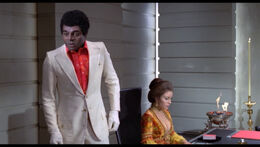
Dr. Kananga as Mr. Big questions Bond and Solitaire
Through his alter ego Mr. Big (Kananga in disguise), he would distribute the heroin from his chain of Fillet Of Soul restaurants for free until the number of drug addicts doubles and his rival drug lords are put out of business, leaving Kananga with a monopoly, allowing him to milk extortionate sums of money out of the addictions he has created. Bond is taken to a crocodile farm to be eaten, but he escapes and outruns Kananga's henchmen in a motorboat chase. Bond returns to Sam Monique, rescues Solitaire from a voodoo sacrifice, and kills Kananga with a compressed gas bullet by forcing it down his throat, causing him to inflate and explode after hitting the ceiling of a cave. In the closing scene of the film where Bond battles Kananga's surviving henchman, Tee-Hee Johnson, and throws him out the train window, the central voodoo character, Baron Samedi, is seen perched on the front of the speeding train in which Bond and Solitaire are travelling, in his voodoo outfit and laughing mysteriously, despite having been supposedly killed by Bond via being thrown into a coffin full of snakes during the film's climax.
Cast & characters
Crew
- Directed by: Guy Hamilton
- Written by: Ian Fleming
- Screenplay by: Tom Mankiewicz
- Produced by: Albert R. Broccoli, Harry Saltzman
- Composed by: George Martin
- Cinematography by: Ted Moore
- Production design by: Syd Cain
- Art direction by: Peter Lamont
Vehicles & gadgets
Main articles: List of James Bond vehicles and List of James Bond gadgets
- Magnetic Watch — Given to Bond by M when turned on it could snag any light weight metallic item. In theory, Bond claims it can even deflect a bullet. It also has a saw built into it.
- Bug Sweeper — Bond uses a handheld device that can sweep a room for electronic microphones.
- Although not an official gadget, Bond improvises a small flamethrower using a can of after-shave lotion and a lit cigar.
- Bond has an espresso machine at his home. In 1973, such devices were uncommon for home use (much as Bond in From Russia with Love had a pager and car-based telephone years before cell phones were invented). Bond made coffee using an incorrect method.
- Similarly, early on in the film, Bond is seen using a Pulsar digital watch, which only entered distribution as recently as 1972. Bond's has an LED display which was activated by pushing a button on the side.
Locations
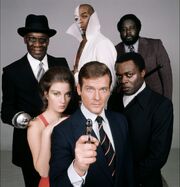
Live and Let Die characters.
Film locations
- London, England
- New Orleans, Louisiana
- San Monique (Fictional country)
- New York City, New York
Shooting locations
Map
Trivia
- The producers made a conscious effort to distance the new James Bond from the character made famous by Sean Connery, perhaps an effort to avoid repeating the George Lazenby fiasco. For example: Roger Moore's Bond never orders a vodka martini (neither shaken, nor stirred), he drinks bourbon whiskey; the mission briefing occurs in Bond's flat (not seen since Dr. No in '62); the armourer Q is dropped from the film (though still mentioned); Roger Moore's James Bond does not wear a hat; he smokes cigars, not cigarettes, in brief: an English gentleman. In time, as Moore grew in to the role, many old Bond-isms returned, and some new elements were dropped.
- It is also the first film since Dr. No where Desmond Llewelyn does not appear as Q.
- Moreover, Roger Moore toned down his famous mannerisms, cultivated in the role of Simon Templar, The Saint, in particular, the cocking eyebrow.
- It is the first of two films featuring Louisiana Sheriff J.W. Pepper; Clifton James reprised the role in The Man with the Golden Gun.
- It is the first of two films featuring David Hedison as Felix Leiter, CIA, who reprised the role in Licence to Kill. Despite the numerous appearances by Leiter in the series, Hedison is one of only two actors to have played the character more than once, the other being Jeffery Wright in Casino Royale and Quantum of Solace.
- Taking a temporary hiatus from scoring Bond films, John Barry subsequently passed the baton over to McCartney's producer, George Martin. This was the first James Bond film that Barry has in some way not been a part of.
- Although never stated in the film, the Jamaican agent, Quarrel Jr., is supposed to be the son of the original Quarrel from Dr. No. Live and Let Die (the novel) featured the original Quarrel and was set before Dr. No, where the character died. However, as Dr. No was filmed first, Quarrel in Live and Let Die was changed to Quarrel, Jr. to avoid continuity problems.
- This is the first James Bond film where a character used the word "Shit." It is uttered by the old woman whose flying lesson is hijacked by Bond (network-television viewers never see this). Even in 1973, that was not enough to have the film rated past PG; viewers would have to wait until 1989, for Licence to Kill (coincidentally also partly based on the novel Live and Let Die) until such language was heard again.
- The Twin Towers of the old World Trade Center were still being constructed during location filming in New York City. In a zoom-in shot of "CIA headquarters" in New York City, the South Tower can be seen briefly in the background with its upper floors still in an unfinished state.
- Owing to the complications of shooting in Harlem (at the time it was one of New York City's most dangerous neighborhoods), some scenes were shot in other areas of Manhattan - for example the exteriors of the Fillet Of Soul restaurant (supposedly on Harlem's famous Leroy Ave), was actually located at the corner of 2nd Avenue and 94th St in the Upper East Side. The building in the film has subsequently been demolished - a high rise apartment tower now stands on the site.
- The one scene that was filmed in Harlem was the outside fight scene between Bond and Mr Big's henchmen. Art director Peter Lamont had the jumble of telephone wires hanging from the buildings cut down and exposed for atmospheric effect, not realising the wires were still live and unwittingly cut off telephone service to the building.
- This was the first and, to date, only James Bond film to acknowledge the supernatural. Although there are indications that Baron Samedi is simply a magician and showman, and that his "resurrection" after falling into a coffin of snakes could be explained as a trick. Solitaire's psychic abilities are more difficult to rationalize.
- One of Kananga's henchmen, Adam (portrayed by Tommy Lane) played a similar role in the classic blaxploitation film, Shaft.
- Coachbuilder Les Dunham provided a Chevrolet Corvette conversion (the Corvorado) which uses components from a 1971 or 1972 Cadillac Eldorado; this car was briefly seen in the blaxploitation film Superfly. He kept the vehicle for several years as a show car. One of the vehicles 007 is pursuing in the film (as a passenger in a taxicab) is a Cadillac Fleetwood Pimpmobile, along with an Eldorado coupe.
- Solitaire's Tarot cards have 007 printed on the backs of them. The High Priestess card was deliberately designed to resemble Jane Seymour. This deck is also known as the Tarot of the Witches Deck designed by Fergus Hall.
- Director Guy Hamilton liked the running over alligators stunt so much he named the villain after the stuntman who performed it, Ross Kananga, the owner of the alligator farm where the scene was filmed. The filmmakers discovered the farm while scouting for locations when they saw a sign warning that "TRESPASSERS WILL BE EATEN."
- The speedboat jump scene over the bayou was interesting in a number of ways. The stuntman piloting Bond's boat unintentionally set a Guinness world record, and a villain's boat was not intended to destroy Sherriff Pepper's patrolcar, which it did. Due to Clifton James's spontaneous character acting in that scene, it was kept.
- Bond evades several police officers when commandeering a double-decker bus - two Chevrolet Novas were seen as police vehicles. Although the Chevrolet vehicles were on loan from GM, this was a few years before the Los Angeles County Sheriff's Department experimented with a similar Nova for police duty to which law enforcement agencies ordered them in bulk.
- Live and Let Die is, to date, the only James Bond film to feature its theme song performed on-screen as part of the movie, namely when Bond and Leiter visit the Fillet of Soul in New Orleans (although the track is played in a different arrangement to that heard over the opening credits).
Videos
See Also
External links
- Live and Let Die (1973) at IMDb
- MGM Official Site: Live and Let Die
- Blaxploitation and Live and Let Die - from the article Cleopatra Jones, 007: Blaxploitation, James Bond, and Reciprocal Co-optation
| |||||||||||||||||||||||||||||
| James Bond films |
|---|
| Sean Connery Dr. No (1962) • From Russia with Love (1963) • Goldfinger (1964) • Thunderball (1965) • You Only Live Twice (1967) • Diamonds Are Forever (1971) |
| George Lazenby On Her Majesty's Secret Service (1969) |
| Roger Moore Live and Let Die (1973) • The Man with the Golden Gun (1974) • The Spy Who Loved Me (1977) • Moonraker (1979) • For Your Eyes Only (1981) • Octopussy (1983) • A View to a Kill (1985) |
| Timothy Dalton The Living Daylights (1987) • Licence to Kill (1989) |
| Pierce Brosnan GoldenEye (1995) • Tomorrow Never Dies (1997) • The World Is Not Enough (1999) • Die Another Day (2002) |
| Daniel Craig Casino Royale (2006) • Quantum of Solace (2008) • Skyfall (2012) • Spectre (2015) • No Time To Die (2021) |
| Unofficial films Casino Royale (1954) • Casino Royale (1967) • Never Say Never Again (1983) |
| All Bond films on Archive |


